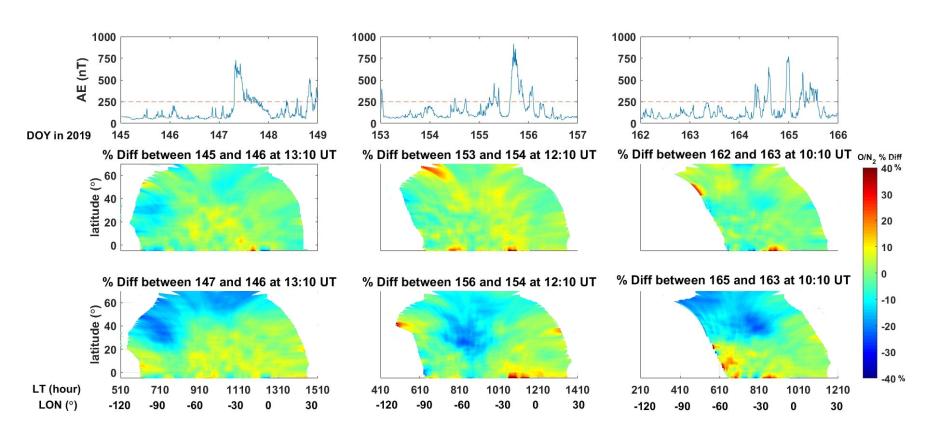Publication Name: Geophysical Research Letters; First HAO Author's Name: Xuguang Cai; Other Authors: Alan G. Burns, Wenbin Wang, Liying Qian, Stanley C. Solomon Richard W. Eastes, Nicolas Pedatella, Robert E. Daniell, Will
We conduct observational and modeling studies of thermospheric composition responses to weak geomagnetic activity (non-geomagnetic storms). We found that the thermospheric O and N 2 column density ratio (∑O/N 2 ) in part of the Northern Hemisphere measured by Global-scale Observations of the Limb and Disk (GOLD) exhibited large and long-lived depletions during weak geomagnetic activity in May and June 2019.

(top) The Kp and Dst index of three cases (DOY 145 to 148; DOY 153 to 156; DOY 162 to 165); (middle) latitude-longitude distribution of ∑O/N2 percentage difference between two quiet days in three cases; (bottom) percentage difference of ∑O/N2 between disturbed and quiet days in three cases. Corresponding local time is marked on longitude interval.
The depletions reached 30% of quiet time values, extended equatorward to 10°N, and lasted more than 10 hours. Furthermore, numerical simulation results are similar to these observations and indicate that the ∑O/N 2 depletions were pushed westward by zonal winds. The ∑O/N 2 evolution during weak geomagnetic activity suggests that the formation mechanism of the ∑O/N 2 depletions is similar to that during a geomagnetic storm. The effects of weak geomagnetic activity are often ignored, but, in fact, are important for understanding thermosphere neutral composition variability and hence the state of the thermosphere-ionosphere system.